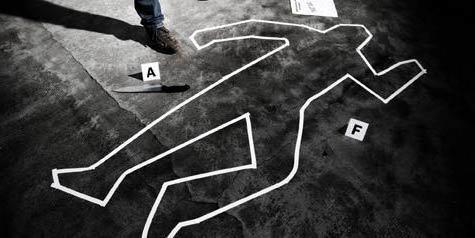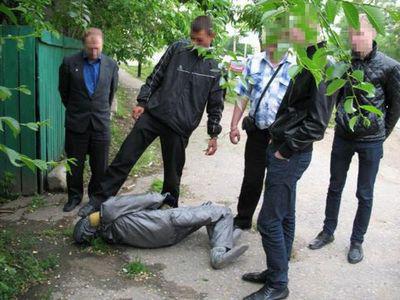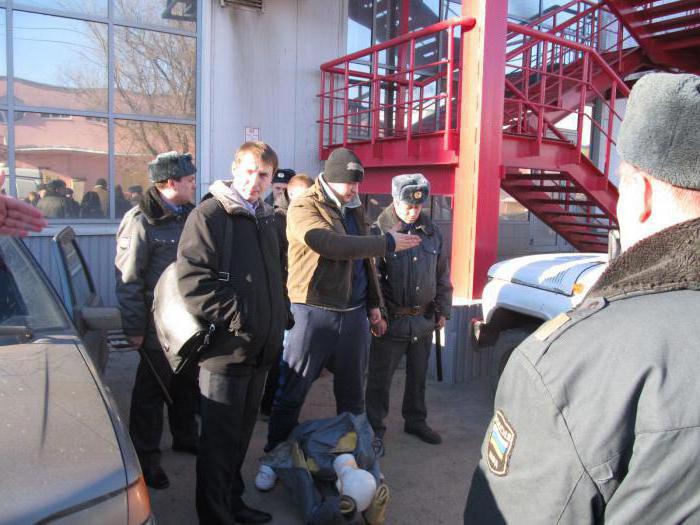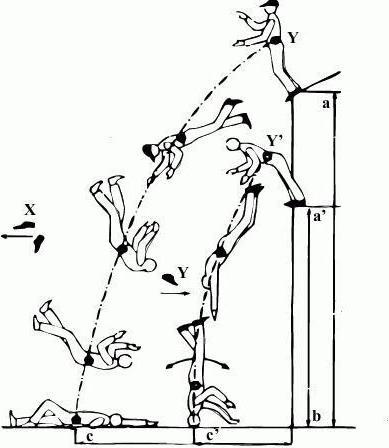Conducting such an important investigative experiment is sometimes the only way to verify one or another circumstance, which is essential for evaluating the collected data on a criminal case under investigation. Moreover, this verification is carried out only empirically. To which branch of science does the tactics of an investigative experiment belong? Forensics considers it as its component. In its framework, students of law schools are studying this area.
Definition of a concept
Under the investigative experiment refers to the procedural action, which provides for Art. 181 Code of Criminal Procedure of Russia. Carry it out by repeating the situation, as well as other circumstances present at the time of the commission of the wrongful act.

An investigative experiment is carried out in order to verify the information that was obtained by experts during interrogations and during inspections of the scene of the incident, as well as the data provided by the accused, lawyers, victims, citizens, officials, etc.
Main tasks
The very word "experiment" itself indicates that this action is carried out experimentally. In addition to checking the evidence that is at the investigator’s hands at that moment, the objectives of such work may include:
- introducing new evidence to the case;
- clarification of the investigator's version of the scheme of the crime committed;
- Establishment of the origin of the verified facts;
- identification of the causes and conditions of any event.
For example, an investigator can only experimentally answer the question of whether a person who was driving a car could see an obstacle in front of him at a certain distance in the dark of the day. Only an experiment can establish whether a witness could hear a conversation taking place in the next room, etc.
 In such and many other similar cases, an investigative experiment is essential. With its help, a verified event is recreated, and under conditions that are as close as possible to those that took place at the time of the crime. The degree of such an approximation will completely depend on the nature of the experiment, on the possibilities of reconstruction, as well as on the environment in which all actions will be imitated.
In such and many other similar cases, an investigative experiment is essential. With its help, a verified event is recreated, and under conditions that are as close as possible to those that took place at the time of the crime. The degree of such an approximation will completely depend on the nature of the experiment, on the possibilities of reconstruction, as well as on the environment in which all actions will be imitated.
Conditions for
The conducted investigative experiment should in no case be dangerous to the health and life of not only its participants, but also of all those people who will be in the immediate vicinity of this place. In addition, such actions should not be the reason for causing even the smallest material damage. They should not be carried out if the probability of creating dangerous consequences. And, most importantly, those experimental actions that will be part of the experiment should not degrade the dignity and honor of citizens.
Characteristics
What are the differences between an investigative experiment and other investigative actions?
1. During the investigative experiment, those actions that could have taken place (or had) taken place at the moment when the crime was committed are reconstructed. But no research is being done. The specialist only observes and records the progress of the experiments, and also reflects the results obtained. Thus, the main purpose of such an experiment is to demonstrate clearly whether or not the possibility of verifiable events existed.
2. Those actions that are recreated empirically take place in an environment similar to that corresponding to the event being checked.This sometimes requires the reconstruction of the location of persons and objects, which was at the time of the crime.
3. Like any experience, an investigative experiment is carried out with repeated repetition of the verified actions. For the reliability of the results obtained, some conditions can be changed, which is dictated by the logic or alternative situation. For example, a test of the ability to hear a conversation sometimes occurs when a pronunciation of a conditioned phrase is offered with a different degree of volume. With such tactics, the probability of the influence of extraneous factors is completely eliminated and the reliability and stability of the results are ensured.
 All of the above signs of an investigative experiment will distinguish it from such actions as examination and examination, verification of the testimony obtained on the spot and presentation for the purpose of identification.
All of the above signs of an investigative experiment will distinguish it from such actions as examination and examination, verification of the testimony obtained on the spot and presentation for the purpose of identification.
Production Procedure Conditions
For the legality and validity of all actions, it is necessary that the tactics of the investigative experiment be observed. All previous procedural procedures are also important.
The tactics of investigative action (investigative experiment) is as follows:
1. In carrying out in conditions similar to the event under investigation, that is:
- in the same place, in the same or similar environment;
- at the same time of day, with the same illumination, under the same or similar sound or meteorological conditions;
- when using the same or similar items;
- with the same speed and pace;
- when attracting the same persons who were participants in the investigated event or similar to them in physical data.
In this case, the tactics of the investigative experiment involves the creation of the maximum similarity between the performed experimental actions, conditions and conditions that took place during real events. However, such production does not allow:
- full reproduction of the circumstances of the dangerous act, as this will result in a new illegal event;
- humiliation of the dignity and honor of the participants in the experiment.
2. In carrying out several types of actions that are carried out alternately in compliance with a logical sequence.
3. In the repeated experiment. This allows you to reduce or eliminate the possibility of a random result.
4. Taking into account the conditions that have already changed, which cannot be reconstructed.
Production stages
The tactics of an investigative experiment involves the separation of all actions into three stages. They are called stages:
- preparatory;
- workers;
- final, in which the fixing of the results and the course of the experimental actions is carried out.
Let's consider them in more detail.
Preparatory stage
The tactics of producing an investigative experiment at this stage include the following:
1. Preparation for carrying out experimental actions before leaving (leaving) to the right place. In this case, the investigator sets some areas of work. So, he defines:
- the place and time of not only the entire experiment, but also each of the proposed experimental actions;
- the necessary conditions that make it possible to obtain reliable results;
- the type, method and content of each of the experimental actions, as well as the sequence of their implementation;
 - list of participants and their responsibilities;
- list of participants and their responsibilities;
- funds that contribute to the fixation of the received data.
In addition, the competence of the investigator includes the preparation of a plan to conduct such an experiment, as well as the implementation of organizational measures, consisting of the following:
- preparation of facilities needed for the reconstruction of the situation;
- preparation of technical means of fixation;
- ensuring the attendance of all participants;
- The solution of issues with transport delivery.
2. Preparation for carrying out pilot actions upon arrival at the required place.At the same time, the tactics of the investigative experiment used imply such actions of the investigator as:
- explanation to all participants of their duties and rights;
- preparing the necessary situation and checking the conditions for compliance with those that were during the event being checked;
- briefing of participants and accommodation of all persons at the places of action;
- warning all participants in the experiment about the responsibility that they bear for the disclosure of the received data, and the victim and witness - for refusing or evading giving true testimonies.
Production stage
The tactics of conducting an investigative experiment at its working stage begins with the fact that brief testimonies of all persons involved in the experimental action are heard. Moreover, all these indications have to be thoroughly checked. What further is the tactic of producing an investigative experiment? The investigator gives the opportunity to the person whose actions are being checked at this stage to check the compliance of the existing situation with the one that was in reality. If a statement is submitted about any significant changes, then everything should be brought into line with the words of the applicant.
 The method of tactics of an investigative experiment is to conduct all actions in the order provided by the investigator. He also determines the need for their repetition, in making adjustments during the course, in consultation with specialists.
The method of tactics of an investigative experiment is to conduct all actions in the order provided by the investigator. He also determines the need for their repetition, in making adjustments during the course, in consultation with specialists.
If the action was performed not by one, but by several persons at once, consideration is given to those separately, in the absence of other participants. In this case, the roles of people outside the place of the experiment are played by others, but necessarily similar to them in their physical data.
Specialist involvement
There are a number of cases where the only way to find out a question of interest to a consequence is to attract a person who is a professional in a particular field. This applies to studies of a sharply altered object (for example, the human body). The opinion of experts is also important in those cases when the instruments for committing a crime are hidden or destroyed.
 The same situations apply, for example, to the tactics of an investigative experiment when falling from a height. The investigator needs to rely on the data of the forensic medical examination, which will allow him to substantiate the judgment on the mechanism of the committed actions. Sometimes such experiments are carried out in order to establish a connection between the injuries and those objects that are at the scene of the incident, as well as to obtain a comparative assessment of the impact of various external conditions on the outcome of the injury.
The same situations apply, for example, to the tactics of an investigative experiment when falling from a height. The investigator needs to rely on the data of the forensic medical examination, which will allow him to substantiate the judgment on the mechanism of the committed actions. Sometimes such experiments are carried out in order to establish a connection between the injuries and those objects that are at the scene of the incident, as well as to obtain a comparative assessment of the impact of various external conditions on the outcome of the injury.
The final stage
The fixing of the investigative experiment is made in the protocol. This document consists of 3 parts. The first of them, introductory, indicates the main objectives of the action.
The second - a descriptive part - reflects each of the experiments performed, and also captures the results. The final part of the document contains an indication of familiarization with all participants in the experiment, their comments and statements, as well as a list of attached photo tables, plans, video and audio tapes, which are additional means of fixation.
Assessment of actions taken
The experiment conducted by the investigator, like any other evidence in a criminal case, is to be studied. It is evaluated according to three criteria:
- admissibility, that is, compliance with all procedural rules of the criminal code;
- relevance or the presence of a result that is directly related to the case;
- reliability, that is, the compatibility of the investigator’s internal conviction with other evidence.
Classification
There are various types of investigative experiments. Moreover, the basis of such a classification is the purpose of their implementation.Depending on what types of investigative experiments are used, the tactics of such actions also have some differences. This should be considered when obtaining results.

The whole variety of experiments conducted by the investigation comes down to four types, namely:
1. To establish the possibility of perception (audibility, visibility, etc.) of a particular fact under the existence of certain conditions (by a specific person or in general).
2. To determine the ability of a person to perform certain actions under specified conditions (by a specific person or in general).
3. To determine the probability of the existence of a phenomenon or fact in certain circumstances.
4. To establish the mechanism of the event under consideration, either as a whole, or its separate stage, as well as the sequence of the event that took place, which should also consider the mechanisms that caused the formation of traces.
Forensic Literature
To date, many books are published, as well as periodicals, which are invaluable for enhancing the professional training of investigators.
With regard to the above material, for example, it considers the topic “Tactics of an investigative experiment” in the journal Vestnik 2015, published by the East Siberian Institute of the Ministry of Internal Affairs of Russia. She is also affected in a publication of the same year in the series "Humanitarian and Social Sciences" published by Oryol State University.